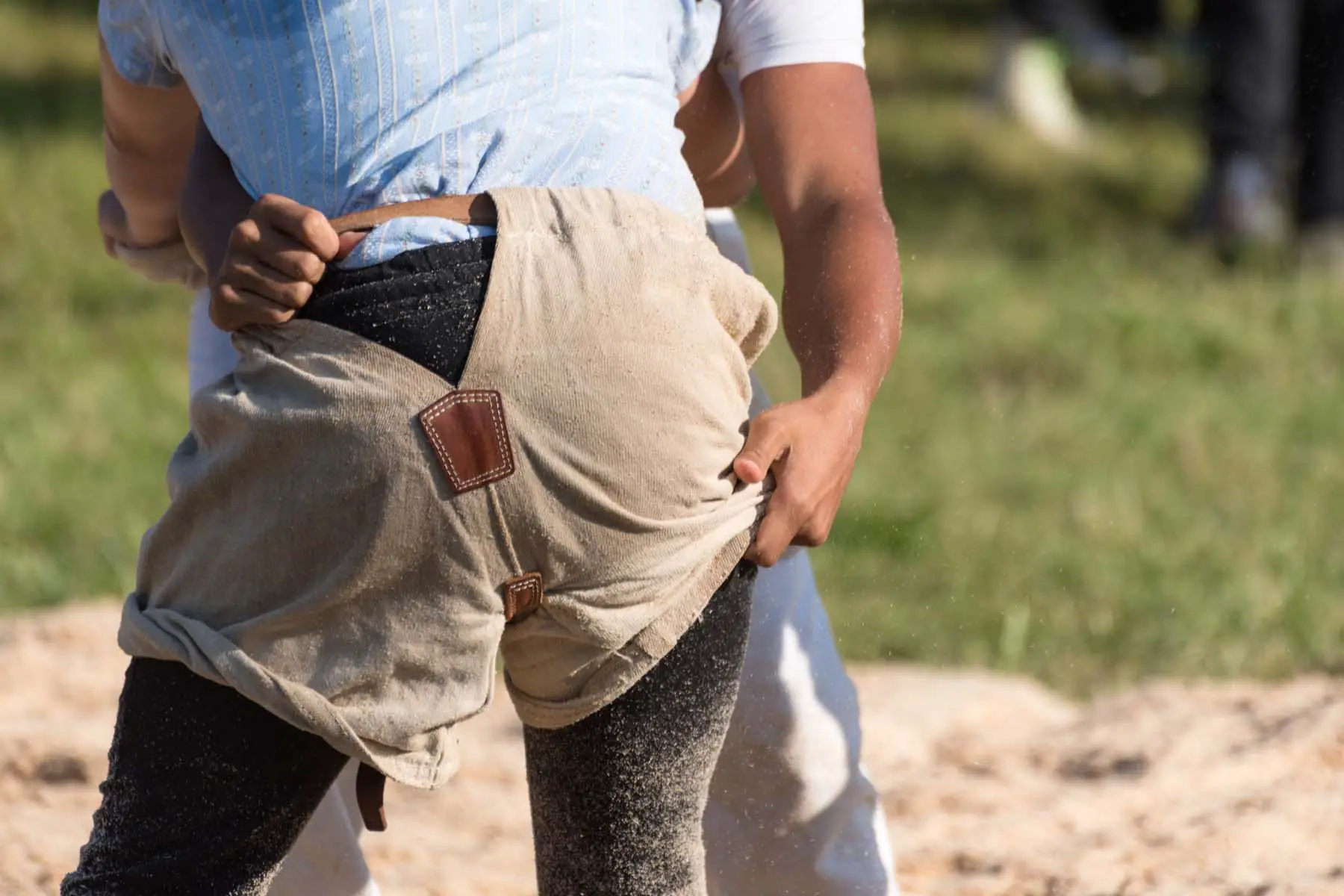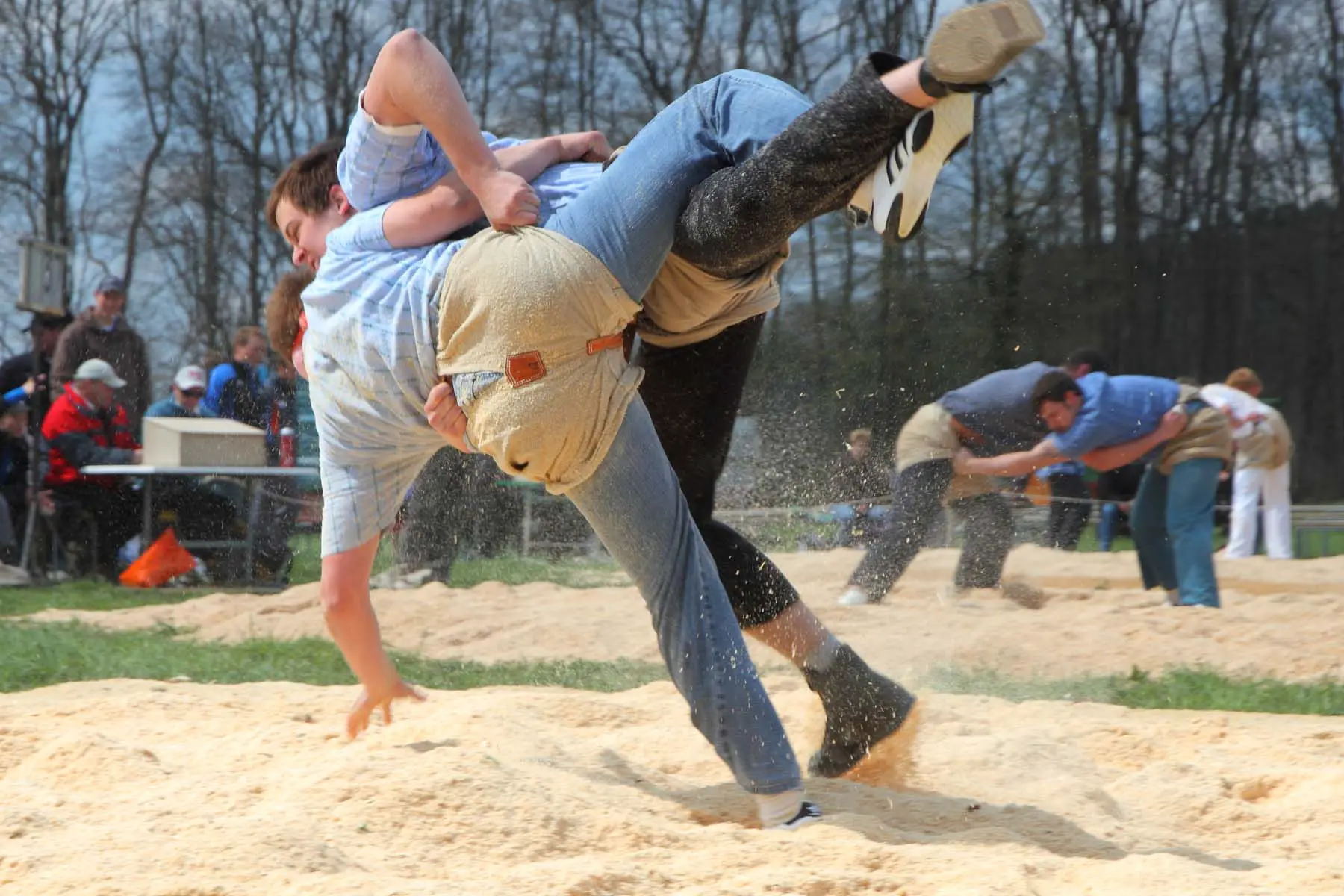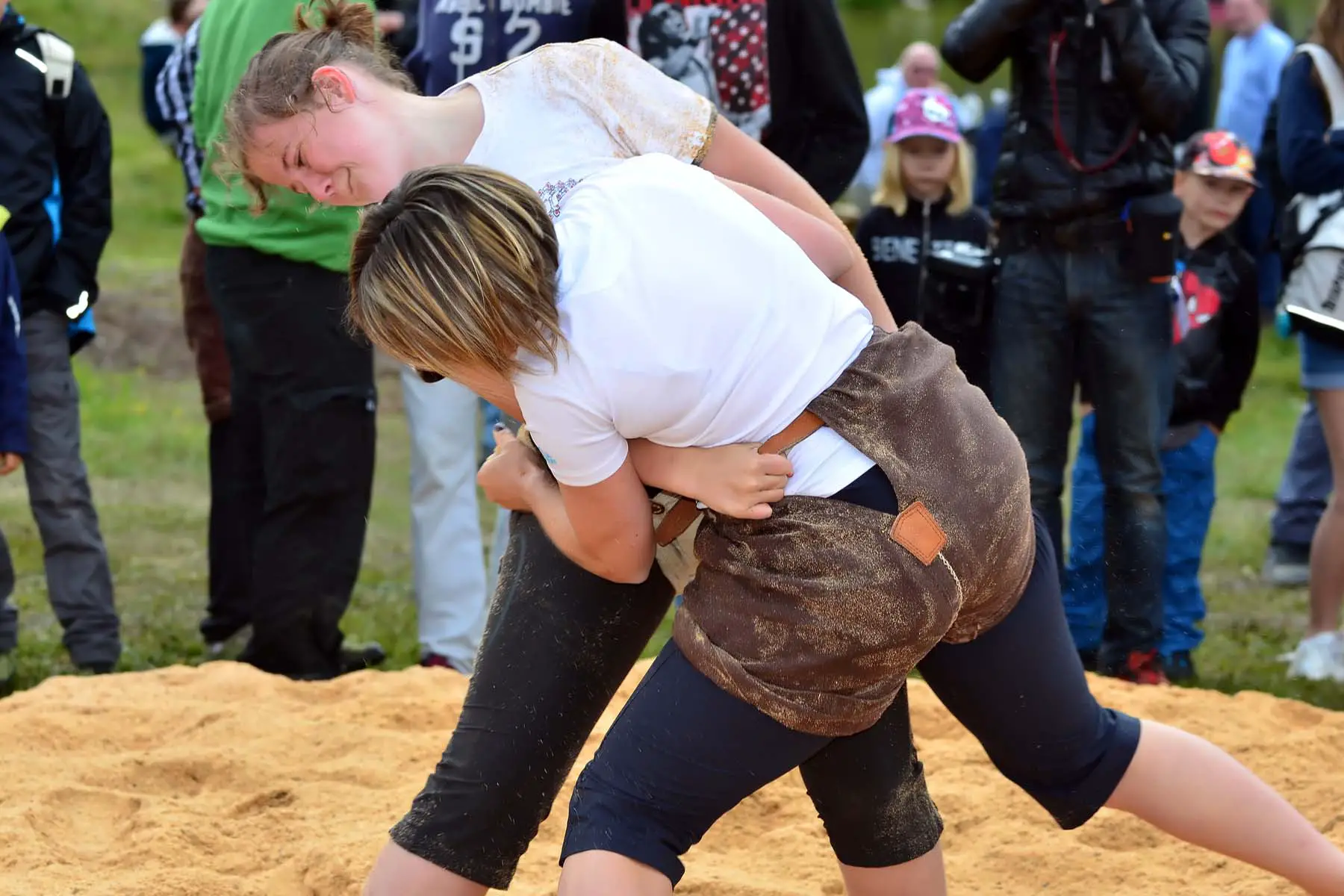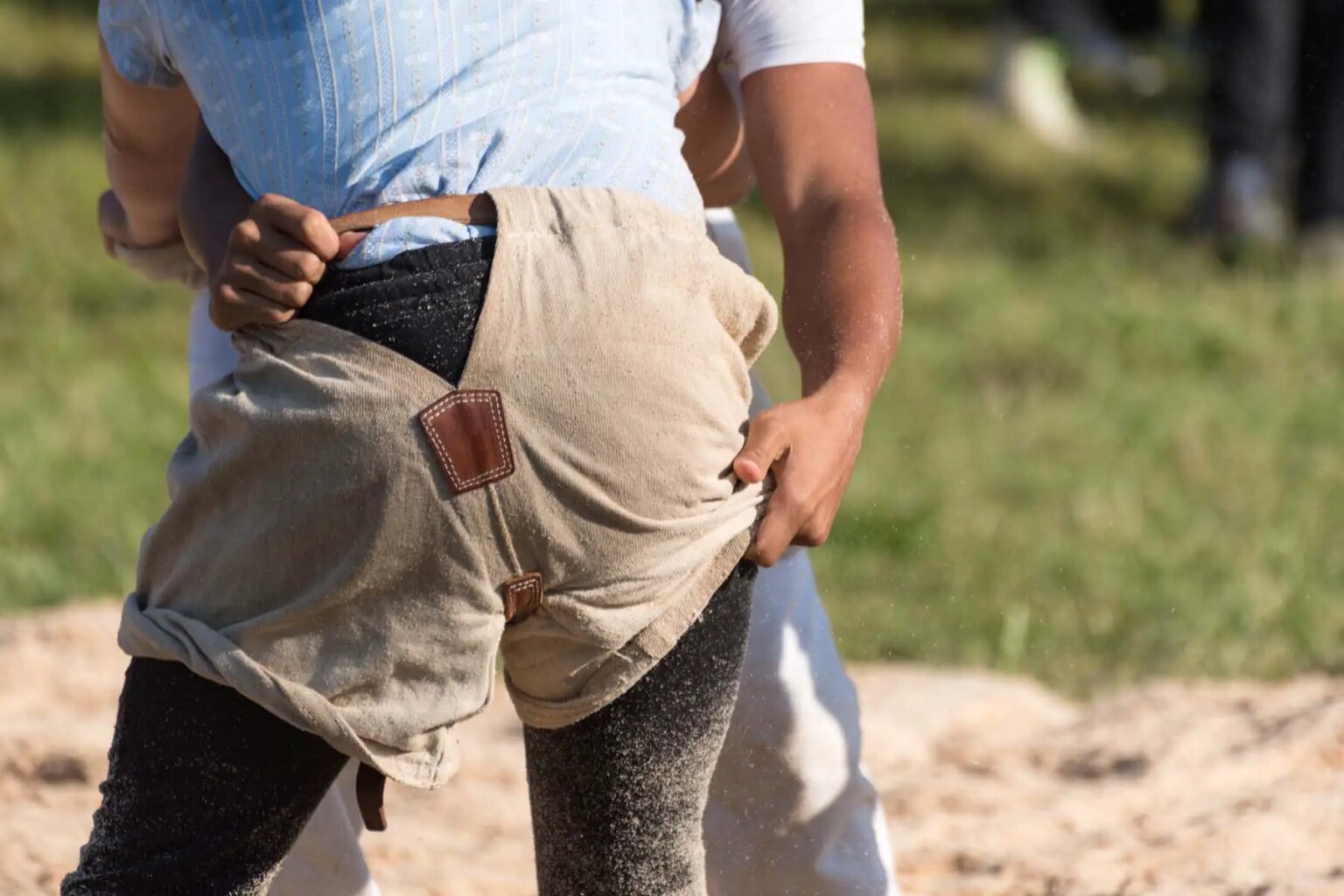Yes, you read the title correctly. Believe it or not, Swiss wrestling is a thing. Despite their reputation for being gentle and reserved, the Swiss love to get down and dirty with a good wrestle. Known locally as Schwingen, wrestling is one of several traditional Swiss sports, alongside Hornussen and Steinstossen. But what exactly is Swiss wrestling and where did it come from? We explain all.
Schwingen has its roots in Swiss farming culture
The earliest records of Schwingen date back to the 13th century. Back then, it was practiced by local farmers working in the country’s mountain regions. However, in the centuries that followed, the art of Swiss wrestling almost died out until it regained popularity in the 19th century.

Since then, the sport has gone from strength to strength. In fact, it has become one of Switzerland’s most celebrated traditional sports in recent decades. With the growing wave of patriotism and pride in all things traditionally Swiss, wrestling competitions regularly attract thousands of local fans; not to mention the occasional curious expat.
It’s all about the shorts…
In French, Swiss wrestling is called lutte à la culotte. This translates as “battle in shorts”, and you’ll soon realize just how important this item of clothing is when you start watching Schwingen. Before the action begins, you will see competitors walk into the 12-meter round circular ring wearing special shorts made of jute (Schwinghosen).

In Swiss wrestling, the aim of the game is to lift your opponent off their feet and pin them down on the ground, which is covered with sawdust. As if that wasn’t difficult enough, you also need to keep a firm grip on your opponent’s infamous jute shorts at all times. Well, we did tell you they were important.
… and the moves
As you might expect, the act of pinning your opponent down on the sawdust has become quite an art over the centuries. And there are a few popular moves that many Schwingers use to do this. These include throws with names like Kurz, Übersprung, and Wyberhaagge; so be sure to look out for these when you’re ringside.

As a rule, both shoulder blades also need to be touching the ground for one of these moves to count. The winner is decided by three judges, including one who stands in the ring. Points are awarded to both competitors, with up to a maximum of 10 being given for a clean pin. In a close match, however, the win is given to the more active Schwinger.
Swiss wrestling is a crowd pleaser
Despite its relatively modest roots, Swiss wrestling has definitely hit the big time in recent years. Although local matches and competitions take place regularly, the holy grail of Schwingen is the popular Eidgenössische Schwing- and Älplerfest (ESAF). This is the festival of traditional Swiss sports and takes place every three years in a different region of Switzerland.

Although the festival includes Hornussen and Steinstossen, the wrestling competition is often the most popular event. The victor in the final round (Schlussgang) is crowned Schwingerkönig, and often in front of a crowd of thousands. In fact, around 420,000 visitors attended the three-day festival in 2019, which was held in Zug. The 2022 competition will be held in Pratteln, near Basel.
Women can Schwing
When it comes to gender equality, women don’t always fare that well in Switzerland. However, despite being a male-dominated sport that is rooted in the rugged Swiss farming fields of the Middle Ages, Schwingen is gradually moving with the times, and more women are taking to the ring.

Indeed, the role of women in Swiss wrestling is going from strength to strength, both in the ring and from the stands. Nowadays, Schwingen is a popular day out for all the family – and a definite must-see for any expats arriving in the country.



